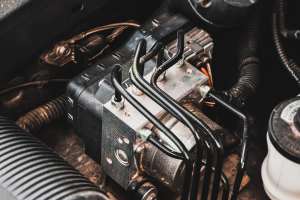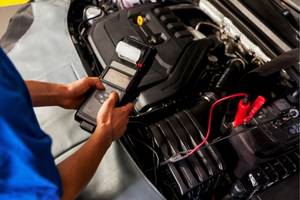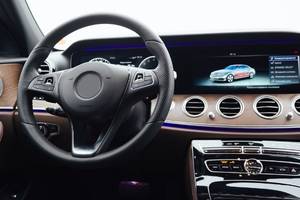Introduction
In modern vehicles, two critical components work behind the scenes to ensure optimal performance and convenience: the Engine Control Module (ECM) and the Body Control Module (BCM). The ECM is the brain behind your vehicle's engine, continuously adjusting and improving its performance. On the other hand, the BCM regulates multiple body functions, from power windows to interior lighting. Understanding these modules' roles and differences can help you appreciate how they contribute to your vehicle's overall functionality and your driving experience.
1. ECM in Vehicles: An Overview
The Engine Control Module (ECM) — sometimes known as the engine control unit — is the brain behind your vehicle's engine. It's a small yet powerful computer that takes readings from various sensors in your vehicle, including the oxygen, temperature, and throttle position sensors.
But what does the ECM do with all this information?
Well, it uses it to improve your engine's performance. By frequently adjusting the fuel mixture and ignition timing, the ECM makes sure that your engine operates at peak efficiency. So whether you're cruising down the highway or stuck in bumper-to-bumper traffic, the ECM is hard at work, keeping your engine running smoothly.
But that's not all. The ECM also plays a crucial role in troubleshooting and diagnostic tasks. When something's not quite right with your engine, the ECM will store a trouble code that mechanics can use to identify and fix the issue.
Remember the last time your check engine light came on? You can thank your ECM for that heads-up.
So, in short, the ECM is like the control center of your vehicle's engine — constantly observing, adjusting, and enhancing to keep things running smoothly. But what about the BCM? How does it differ from the ECM? Let's find out in the next section.
2. BCM in Vehicles: An Overview
Just like your vehicle's ECM, the Body Control Module (BCM) is another important component that keeps your vehicle functioning properly. But, while the ECM focuses on the engine, the BCM is all about the body functions of your vehicle.
To put it simply, the BCM is like the conductor of your vehicle's symphony of features. It controls and organizes everything from your power windows and door locks to your headlights and interior lights. If you've ever enjoyed the convenience of automatic headlights or the safety of anti-theft systems, you've got the BCM to thank.
But the BCM's responsibilities don't end there. It also plays a dangerous role in monitoring the various systems it controls. So, if there's an issue with your power windows or your headlights, the BCM will often detect it and alert you to the problem.
On top of all this, the BCM communicates with the ECM, sharing important information about the vehicle's body functions. This collaboration helps your vehicle function as a coherent unit, making sure a smooth and safe ride.
In essence, the BCM is your vehicle's personal attendant, managing all the non-engine related features to provide you with a comfortable and convenient driving experience.
So, we've got the ECM handling the engine and the BCM taking care of body functions. But how exactly do these two components components differ? Let's dive right into the difference between ECM and BCM in the next section.
3. Comparing ECM and BCM: Key Differences
Now that we have a better understanding of both the ECM and BCM, let's dig right into how they differ from each other. While both are essential parts of your vehicle, their roles and responsibilities vary greatly.
3.1 Functionality
The first major difference between ECM and BCM lies in their functionality. As we've discussed, the ECM is primarily concerned with engine management. It controls the engine's fuel mixture, ignition timing, and emission control systems. In other words, it's all about making your engine run smoothly and efficiently.
On the other side, the BCM is the go-to for your vehicle's body functions. From power windows, door locks, to headlights and interior lighting, it's because of the BCM that these features are possible.
3.2 Interaction with Other Components
While both modules interact with other components and systems within the vehicle, the nature of these interactions differs.
The ECM communicates directly with various sensors throughout the engine, adjusting parameters based on the data it receives to enhance engine performance.
On the other hand, the BCMcoordinates and manages the functions of various body-related components, such as power windows and central locking. It also communicates any detected issues to the driver, often via warning lights on the dashboard.
The impact on vehicle performance also varies between the ECM and BCM. A malfunctioning ECM can lead to serious engine related issues, reduced fuel efficiency, or even prevent the vehicle from starting.
A faulty BCM, while not typically preventing the vehicle from running, can create troubles. Issues with power windows, door locks, or interior lighting can all occur if the BCM isn't working properly.
In conclusion, while the ECM and BCM are both integral components of your vehicle, they each play unique roles. Understanding the difference between ECM and BCM can help you better identify issues with your vehicle and keep it running smoothly. But how do these modules work in real-world applications? Let's explore in the next section.
4. Practical Applications: ECM and BCM in Action
Now that we've understood the difference between ECM and BCM, let's dive into their practical applications. Buckle up, because we're about to see these modules in action!
4.1 ECM in Action
In a normal scenario, imagine you're driving uphill. The ECM senses the increased load on the engine. It takes inputs from various sensors, such as the throttle position sensor and manifold absolute pressure sensor. Then, it adjusts the fuel-air mixture and ignition timing to provide extra power to the engine. You can thank this useful little module next time you're cruising uphill without a hitch.
4.2 BCM in Action
Let's say you're approaching your vehicle in a dark parking lot. You press the unlock button on your key. The BCM receives the wireless signal, verifying it before sending commands to unlock the doors and turn on the interior lights. It's the BCM that gives you a welcoming glow, making your car feel like a safe haven in the darkness.
4.3 ECM and BCM Working Together
While the ECM and BCM have separate roles, they do communicate with each other. For example, when you turn the ignition key, the BCM sends a signal to the ECM. The ECM in turn checks if everything's A-OK with the engine before allowing it to start. So, the next time you start your car, remember that it's the tuneful partnership between the ECM and BCM making it possible.
With these examples, you can see how the difference between ECM and BCM translates into real-world applications. These modules, while often missed, are the real heroes, keeping our vehicles running smoothly and our journeys comfortable.
Conclusion
In conclusion, the ECM and BCM are very important components of any modern vehicle, each playing different yet complementary roles. The ECM focuses on engine management, ensuring smooth and efficient performance, while the BCM manages body functions, providing convenience and safety features. Identifying the functions and differences between these modules helps in better understanding and troubleshooting vehicle issues, ultimately contributing to a smoother and more reliable driving experience.
FAQs on
ECM Vs. BCM : Comprehensive Guide
-
1. What is the main function of the ECM in a vehicle?
Ans.
The ECM, or Engine Control Module, is responsible for managing the engine's performance. It takes readings from a number of sensors and adjusts the fuel mixture and ignition timing to ensure the engine operates efficiently.
-
2. How does the ECM improve engine performance?
Ans.
The ECM uses data from sensors to make real-time adjustments to the engine's fuel mixture and ignition timing, optimizing performance and efficiency under different driving conditions.
-
3. What role does the BCM play in a vehicle?
Ans.
The Body Control Module (BCM) manages the vehicle's body functions, such as power windows, door locks, headlights, and interior lighting, enhancing convenience and safety.
-
4. How do the ECM and BCM communicate with each other?
Ans.
The ECM and BCM communicate through the vehicle's network to ensure coordinated operation. For example, the BCM sends a signal to the ECM when the ignition key is turned, allowing the engine to start if everything is in order.
-
5. What happens if the ECM malfunctions?
Ans.
A malfunctioning ECM can lead to serious engine issues, such as reduced fuel efficiency, or even prevent the vehicle from starting. It may also activate the check engine light to alert the driver of a problem.
-
6. Can a faulty BCM affect vehicle performance?
Ans.
While a faulty BCM typically does not prevent the vehicle from running, it can cause issues with body functions like power windows, door locks, or interior lighting, impacting overall convenience and safety.


